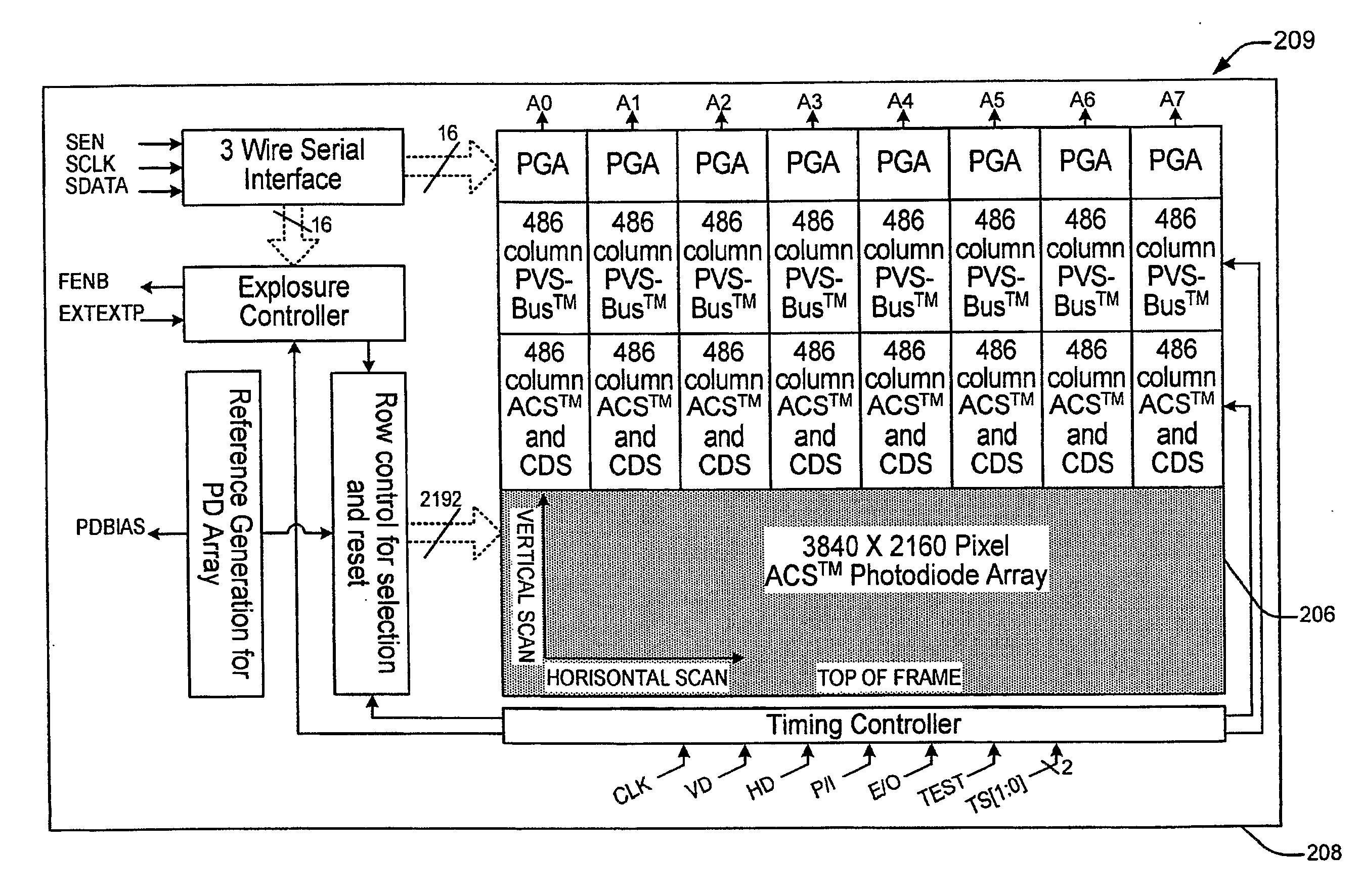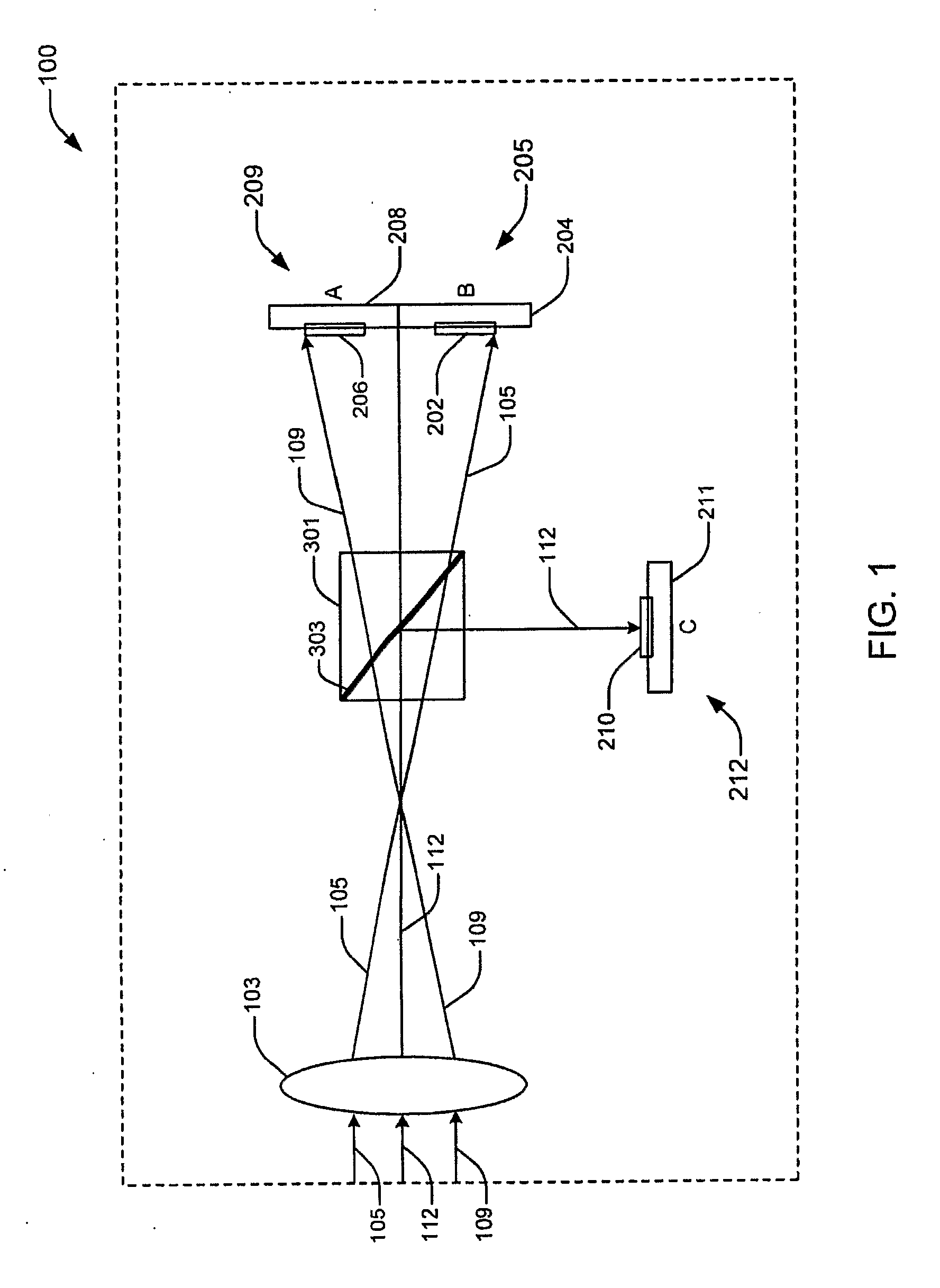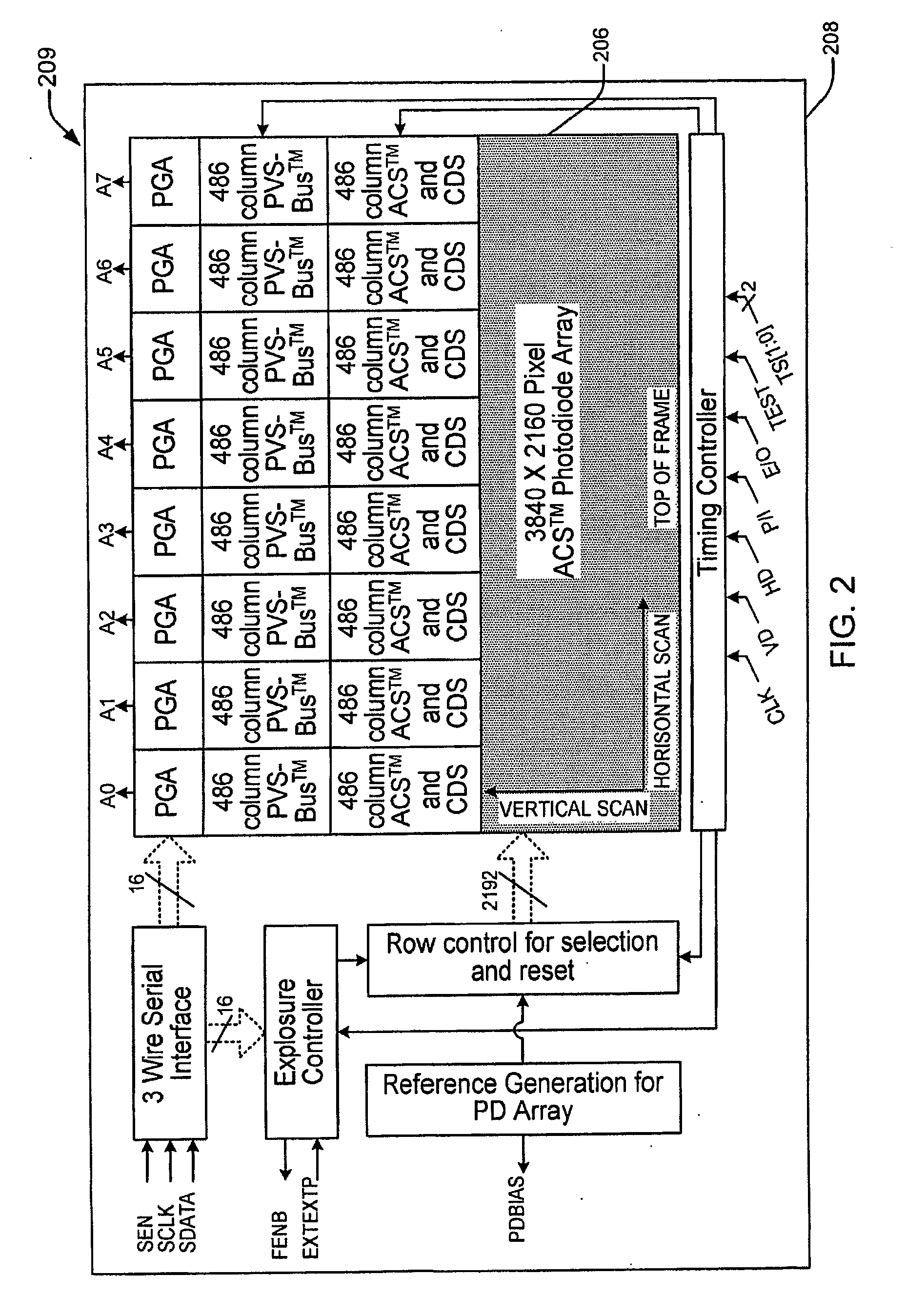Imager and Imaging Method for Digital Cinematography
a digital cinematography and imager technology, applied in the field of television cameras, can solve the problem of limited image resolution of conventional solid-state imaging devices
- Summary
- Abstract
- Description
- Claims
- Application Information
AI Technical Summary
Benefits of technology
Problems solved by technology
Method used
Image
Examples
Embodiment Construction
[0012]FIG. 1
[0013]FIG. 1 illustrates an imager 100 according to an embodiment of the invention. Imager 100 comprises three video image sensor packages (209, 205 and 212). Each image sensor package comprises photo-sensing elements arranged in an array (206, 202, 210). Each array (206, 202, 210) is disposed on a respective substrate (208, 204, 211). Imager 100 further comprises a lens 103 and an optical beam splitter 301. Conventional circuits and components comprising imager 100 according to embodiments of the invention are not illustrated in FIG. 1 for ease of discussion of the invention.
[0014]Imager 100 forms an optical image of an object 9 (illustrated, for example in FIG. 3). For purposes of this specification the term “object” refers to an object or objects comprising a scene to be captured by the imager for subsequent display to a viewer on a display device. Lens 103 focuses light from object 9 (represented generally by lines 105, 112 and 109) onto photoelements of arrays 206, ...
PUM
 Login to View More
Login to View More Abstract
Description
Claims
Application Information
 Login to View More
Login to View More - R&D
- Intellectual Property
- Life Sciences
- Materials
- Tech Scout
- Unparalleled Data Quality
- Higher Quality Content
- 60% Fewer Hallucinations
Browse by: Latest US Patents, China's latest patents, Technical Efficacy Thesaurus, Application Domain, Technology Topic, Popular Technical Reports.
© 2025 PatSnap. All rights reserved.Legal|Privacy policy|Modern Slavery Act Transparency Statement|Sitemap|About US| Contact US: help@patsnap.com



